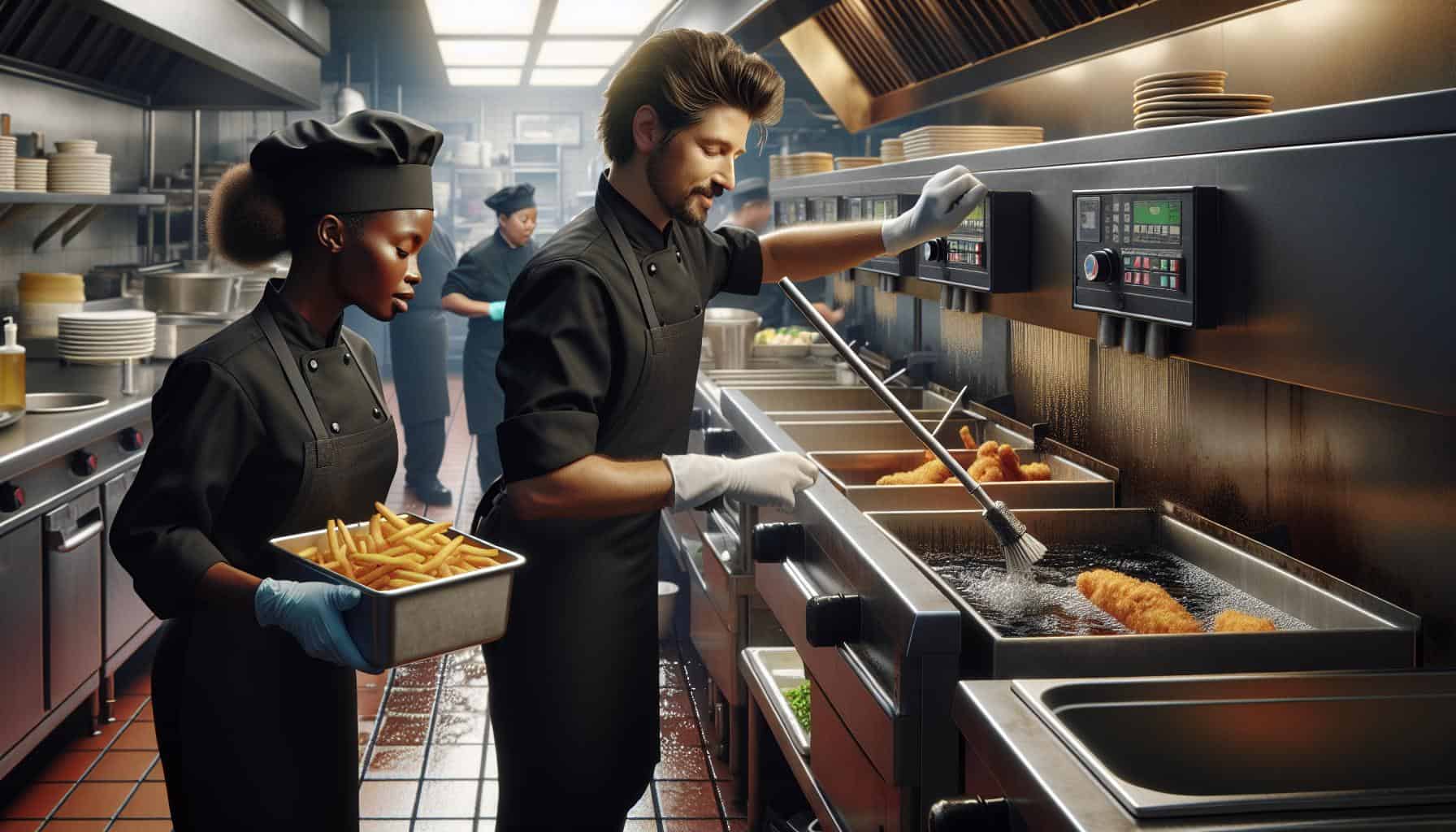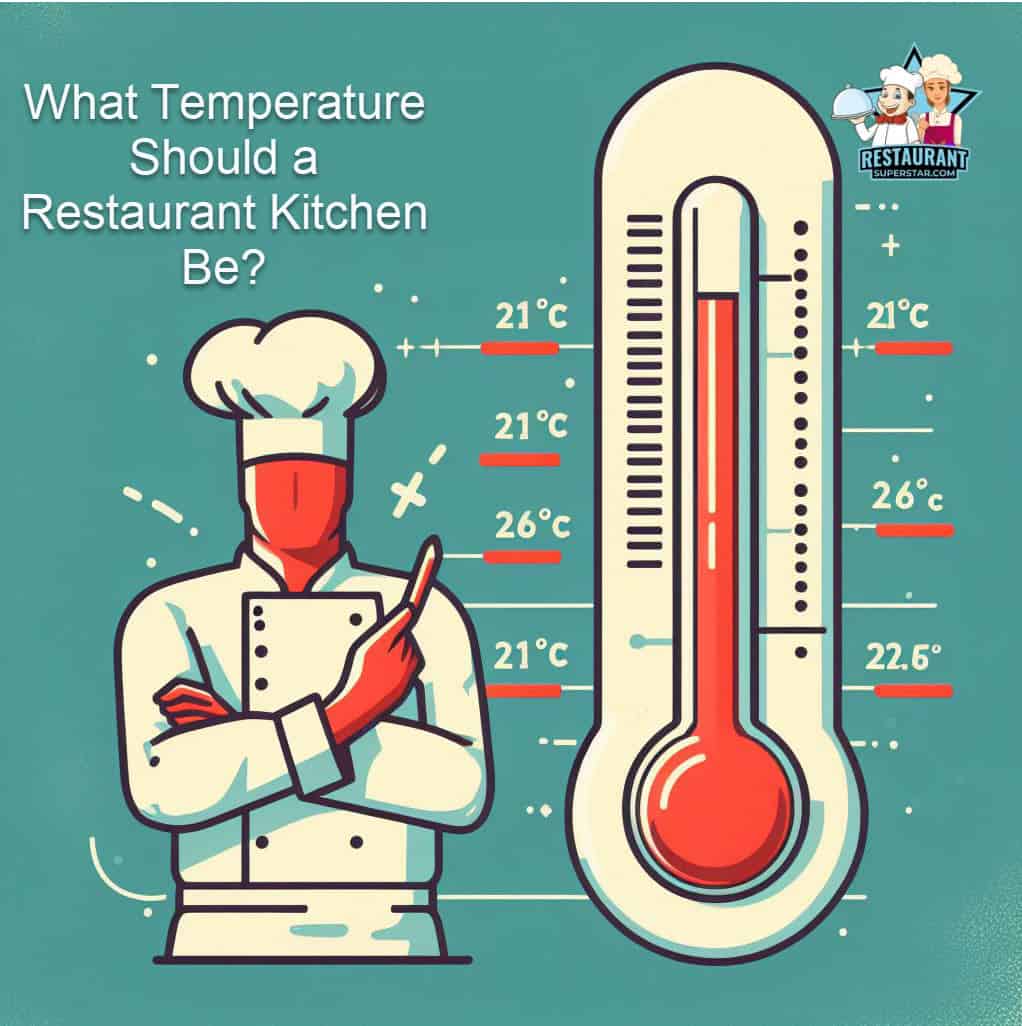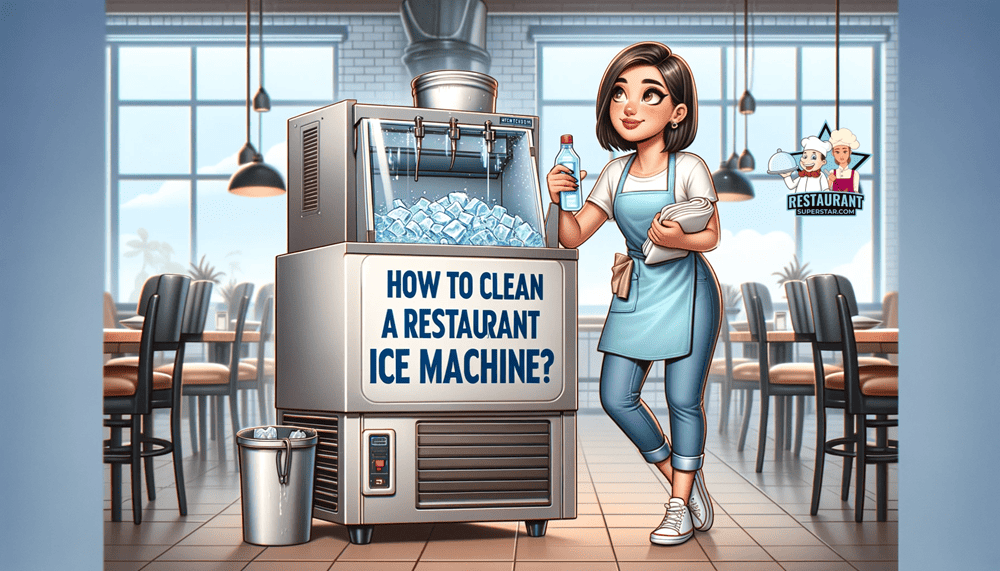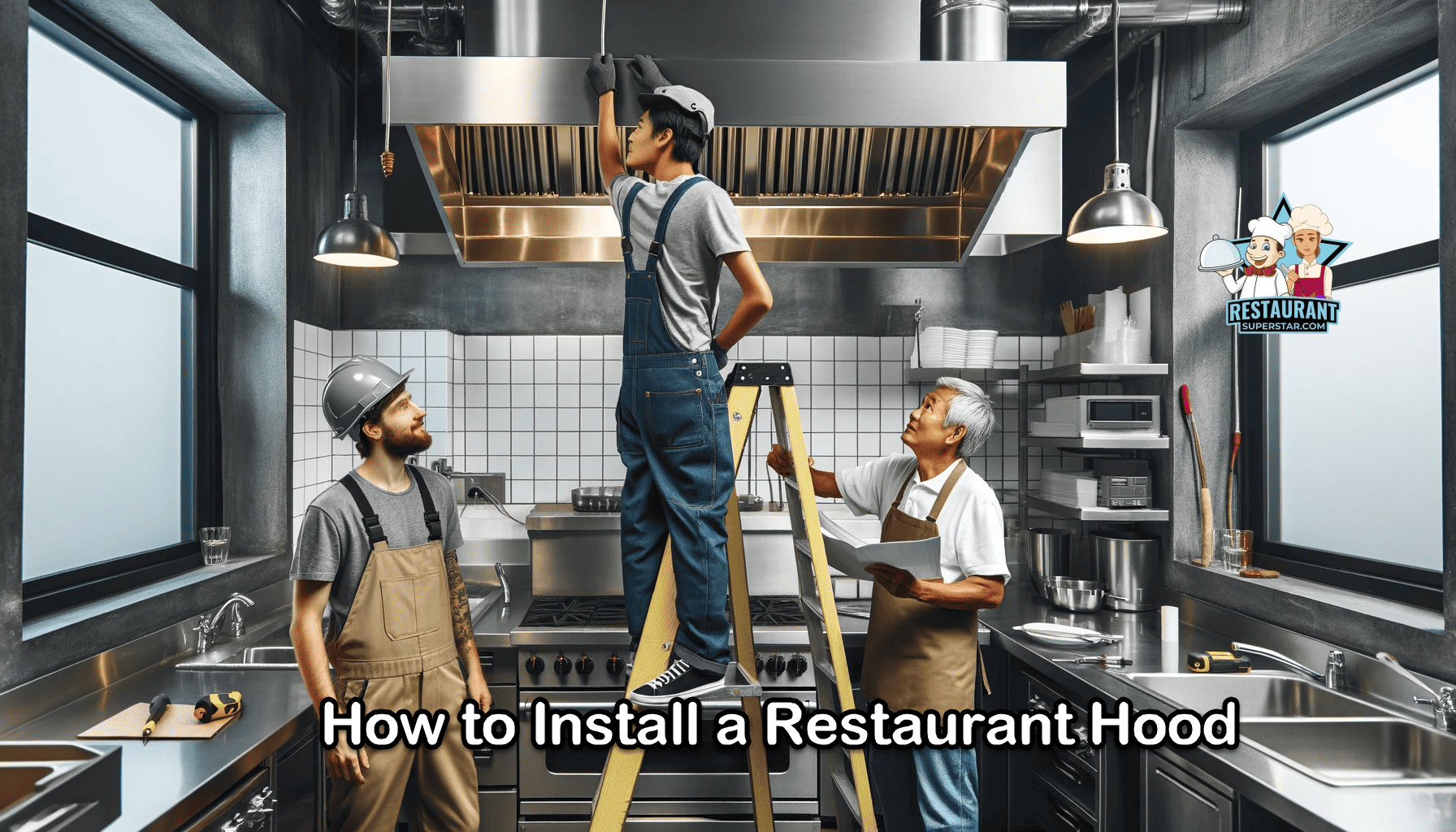Step-by-Step Guide to Restaurant Business Valuation
If you’re pondering the value of your restaurant, whether for sale, financial planning, or mere curiosity, you’ve landed in the perfect spot.
Our guide not only unravels the mysteries of Restaurant Business Valuation but also provides a comprehensive, step-by-step journey through this crucial process.
This article is an indispensable resource, especially tailored for new restaurant owners, aspiring chefs, and anyone eager to understand the intricacies of valuing a restaurant business.
With insights that delve deeper than the surface, we promise to keep you engaged and informed, making complex concepts accessible and straightforward.
Restaurant Business Valuation
Restaurant Business Valuation: While the short answer involves calculating your Seller’s Discretionary Earnings (SDE) and applying the right multiples, there’s much more to explore.
This article will guide you through every step, ensuring you have all the knowledge needed for an accurate valuation.
Seller’s Discretionary Earnings (SDE) – The Foundation of Valuation

The Concept of SDE
Let’s discuss something super important in the restaurant biz – Seller’s Discretionary Earnings, or SDE. Think of SDE as a key that unlocks the actual value of your restaurant. It’s not just about what you see in your bank account at the end of the day; it’s about understanding the full financial picture of your eatery.
Why is SDE Important?
SDE is a big deal because it shows the true profitability of your restaurant. It’s like putting on a pair of glasses that helps you see the clear, complete view of how much money your restaurant is actually making. This is crucial, especially when thinking, “How much does a restaurant manager make?” or “What’s my restaurant worth?
Breaking Down SDE
1- Net Income: Your restaurant’s earnings after all expenses are paid. Think of it as your restaurant’s paycheck.
2 – Add-backs: These expenses are unique to you as the current owner and may not apply to a future owner. This can include:
- Your salary as the owner (Yep, what you earn counts here!)
- One-time expenses (like that fancy new sign you got last year)
- Non-business expenses (like your personal car used partly for business)
Adding these back into your net income gives you a more realistic picture of your restaurant’s earnings. It’s like saying, “Here’s what the restaurant makes, considering all the unique stuff about my management style.”
Why Should You Care About SDE?
As a new restaurant owner or a young chef dreaming big, understanding SDE is like having a secret weapon. It helps you:
- Determine how much money you could make as a restaurant manager or owner.
- Understand your restaurant’s worth, whether you’re buying, selling, or just planning for the future.
- Make smarter financial decisions because you’re seeing the full earnings picture.
SDE is a straightforward yet powerful tool. It’s not about complex financial jargon; it’s about getting a true sense of your restaurant’s economic health.
So, keep SDE in your toolkit, whether you’re knee-deep in the kitchen or planning your next big culinary venture. It’s your go-to metric for making those big money decisions.
How to Calculate Seller’s Discretionary Earnings (SDE)
Calculating SDE sounds daunting, but it’s pretty straightforward once you break it down. Let’s go through it step by step, using your past three years of tax returns.
This will give you a clear picture of how much your restaurant is making – a super important figure for anyone in the restaurant game, whether you’re a fresh-faced owner or a seasoned chef.
Step 1: Gather Your Tax Returns. Start by digging up your restaurant’s tax returns from the last three years. These documents are like a treasure trove of financial info and are the foundation of your SDE calculation.
Step 2: Identify Your Net Income Net Income as your starting point. It’s your restaurant’s profit after all the expenses have been paid out. You’ll find this number in your tax returns – it’s basically what’s left after all the bills are settled.
Step 3: Add Back Specific Expenses Now, you will add certain expenses to your Net Income. Why? Because these expenses might be unique to you as the current owner and wouldn’t necessarily apply to a new owner.
Here’s what to include:
- Interest: If you’ve paid interest on loans, add this back. It’s an expense that a future owner might not have.
- Depreciation & Amortization: These are accounting charges related to your assets (like kitchen equipment or the building itself) losing value over time. Add them back because they’re not actual cash expenses.
- Owner Compensation: Whatever salary or benefits you’re drawing from the business, add them back in. This includes your health insurance if paid by the business.
- Discretionary Expenses: These expenses are optional to running the restaurant. Think of personal expenses paid through the business, like your phone bill or that country club membership.
Step 4: Calculate Your SDE Once you’ve added all these back, the resulting figure is your Seller’s Discretionary Earnings. This number gives you, potential buyers, and investors a clearer picture of your restaurant’s financial health and potential profitability.
SDE is your friend, especially if you’re new to this restaurant ownership thing. It helps you understand what’s going on with your business financially. It’s like having a financial x-ray of your restaurant – it shows you what’s happening beneath the surface.
Adjusting Earnings for Fair Market Value
Alright, now that you’ve calculated your Seller’s Discretionary Earnings (SDE), the next big step is making sure these earnings reflect the fair market value of your restaurant. This means adjusting your SDE to account for factors that might not apply to a new owner.
Let’s dive into what these adjustments could be and why they matter for a realistic valuation.
Necessary Adjustments for a Realistic Valuation
- Adjusting Rent: If you own the building where your restaurant is located, the rent you’ve been charging yourself might differ from the market rate. Adjust this to what you would realistically charge a new owner. This ensures the valuation reflects the restaurant’s profitability under standard market conditions.
- Accounting for Big Purchases: Have you recently splurged on a big purchase, like a state-of-the-art oven or a fancy espresso machine? If a new owner needs to replicate something it’s after some time, you should adjust for this. Add the purchase cost (minus any depreciation), as these are not regular operating expenses.
- Family Member Salaries: Do you have family members working in the restaurant? You’ll need to adjust these figures if they’re being paid but not working or their salaries are above the standard market rate. Replace their salaries with what you’d pay a non-family member for the same job. This gives a clearer picture of the actual labor costs.
- PPP/EIDL Adjustments: If you received loans or grants like the PPP (Paycheck Protection Program) or EIDL (Economic Injury Disaster Loan) during tough times (like the COVID-19 pandemic), remember these are not regular income sources. Exclude these from your earnings to reflect a more typical operational scenario.
Why These Adjustments Matter
Making these adjustments is key to getting a valuation that’s accurate and fair. It’s about presenting a realistic scenario to potential buyers or investors.
They want to know what the business looks like under normal conditions without the unique quirks of your current operation.
For new restaurant owners and young chefs, understanding these adjustments is crucial. It’s not just about knowing your restaurant’s worth; it’s about gaining insights into managing financial aspects more effectively.
These adjustments teach you to look beyond the surface numbers and understand the underlying financial health of your restaurant.
Remember, adjusting your earnings for fair market value isn’t about inflating your restaurant’s worth; it’s about painting an honest, transparent picture of its profitability.
This clarity helps in valuing your business accurately. It builds trust with potential buyers and investors, setting the stage for successful negotiations.
Weighted Average Formula for SDE
Let’s talk about fine-tuning your Seller’s Discretionary Earnings (SDE) calculation using the weighted average formula. This is a crucial step to get an even more accurate valuation of your restaurant, especially if you’re a new owner or chef looking to make smart financial decisions.
Understanding the Weighted Average Formula
The idea behind the weighted average formula is straightforward. Instead of treating each year’s SDE as equally important, we give more weight to the recent years. Why? Because the latest figures often provide a better picture of your restaurant’s financial health and potential future performance.
Here’s a simple way to understand it:
- Most Recent Year (Year 3): We give this year the most weight, say 50%. It’s the freshest look at your restaurant’s performance.
- Second Most Recent Year (Year 2): This gets less weight, around 37.5%. Still important, but less telling than the latest year.
- Third Most Recent Year (Year 1): This gets the least weight, say 12.5%. It’s the oldest data and may not reflect your current situation.
Applying the Formula
- Calculate SDE for Each Year: Start by figuring out the SDE for each of the past three years.
- Apply the Weights: Multiply each year’s SDE by its respective weight. For example, if your SDE in Year 3 is $120,000, multiply it by 50% (or 0.5), which equals $60,000.
- Sum Up the Adjusted Figures: Add these weighted figures together. This total gives you a more nuanced view of your restaurant’s earning power over recent years.
Why Use This Formula?
Using the weighted average method is super helpful because:
- It reflects recent changes in your business, like menu updates, price changes, or increased competition.
- It smooths out anomalies in a single year, like an unexpected expense or a one-time windfall.
- It gives potential buyers or investors a more realistic idea of what they can expect regarding earnings.
As a new restaurant owner or an aspiring chef, mastering this formula helps you understand not just the value of your restaurant but also how different years can impact that value.
It’s a tool that provides a more transparent, more balanced view of your financial performance, which is crucial for making informed decisions about your restaurant’s future.
Determining the Right Multiple for Your Restaurant
After calculating your SDE using the weighted average formula, the next crucial step in the valuation process is determining the correct multiple to apply to your restaurant. This multiple is a crucial factor in figuring out the overall value of your business. But how do you decide which multiple is suitable for your restaurant?
Let’s break down the factors that influence this decision.
Factors Influencing the Multiples
Time in Business
- The longer your restaurant has successfully operated, the more reliable it appears to potential buyers or investors. A track record of success over several years typically justifies a higher multiple.
- On the other hand, new establishments might have to settle for a lower multiple due to the inherent risks associated with newer businesses.
Need for New Hires
- If a new owner needs to hire additional staff to maintain or grow the business, this could impact multiple aspects. The cost and effort of training new employees can be a significant consideration.
- On the flip side, if your restaurant runs efficiently with the current staff, this could be a selling point and boost the multiple.
Type of Restaurant
- The kind of restaurant you run plays a huge role. For instance, a well-established fine dining restaurant might command a higher multiple than a quick-service or casual dining establishment due to its clientele, reputation, and typically higher profit margins.
- While possibly having lower margins, quick-service restaurants might appeal to buyers looking for simpler operations. They could attract a reasonable multiple based on operational efficiency and market demand.
Tailoring the Multiple to Your Restaurant
Understanding these factors is crucial, especially if you’re a new restaurant owner or a young chef. It’s not just about picking a number out of thin air. It’s about assessing your restaurant’s unique attributes and how they align with market expectations.
Remember, the multiple essentially reflects how much confidence the market has in the future earnings of your restaurant.
It’s a balance between the perceived risks and the potential rewards. Your job is to present your restaurant in the best light, highlighting its strengths and mitigating any perceived weaknesses.
Tiered Approach Based on Revenue and Restaurant Type
When determining the correct multiple for your restaurant’s valuation, a tiered approach based on your annual revenue and the type of restaurant you operate can be incredibly helpful.
This method considers the unique aspects of your restaurant, such as whether it’s a full-service or quick-service establishment. Let’s explore how this tiered approach works.
1. Full-Service Restaurants
Characteristics
These are your sit-down restaurants where customers receive table service. They often have a wider menu and offer a more comprehensive dining experience.
Revenue-Based Tiers
- For full-service restaurants, the multiple can vary significantly based on revenue. Higher revenue often correlates with a higher multiple due to the perceived stability and success of the business.
- Example: A high-revenue, well-established full-service restaurant in a prime location might be valued at a multiple closer to 3x its SDE, reflecting its market position and profitability.
2. Quick-Service Restaurants Characteristics:
These establishments focus on fast food and quick turnaround. They usually have a limited menu and minimal table service.
Revenue-Based Tiers
- Quick-service restaurants often operate on thinner margins but can make up for it in volume. Their multiples might be lower than full-service restaurants but can be offset by high sales volume.
- Example: Despite having a lower per-customer revenue than a full-service restaurant, a quick-service restaurant in a busy urban area might still achieve a reasonable multiple due to its high traffic and efficient operation.
Applying the Tiered Approach
- Assess Your Revenue: Look at your annual revenue and categorize your restaurant accordingly. Are you a high, mid, or low revenue earner in your category?
- Consider Your Restaurant Type: Factor in whether you’re full-service or quick-service. Each has its market perceptions and operational efficiencies that affect valuation.
- Adjust for Unique Attributes: No two restaurants are the same. Consider any unique aspects of your business that might impact your valuation, like a special location, a niche market, or a renowned chef.
Factors Driving Up the Value of a Restaurant
Identifying what boosts the value of your restaurant is crucial, especially if you’re planning to sell or looking to increase its market worth. Certain factors can significantly elevate your restaurant’s appeal to potential buyers or investors.
Let’s delve into some key elements that can drive up the value of your restaurant.
1. Minimal Owner Involvement
- Why It Matters: Restaurants that can operate smoothly without heavy involvement from the owner are highly attractive. This shows potential buyers they’re investing in a business with a competent team and efficient systems, not just buying a job.
- Impact on Value: The less an owner needs to be involved in daily operations, the higher the potential value of the restaurant, as it suggests stability and ease of transition for a new owner.
2. Limited Family Involvement
- Why It Matters: Similar to owner involvement, it’s a plus if the business runs well without needing family members to fill critical roles. This indicates that the restaurant isn’t overly reliant on the owner’s personal connections and family labor.
- Impact on Value: Fewer family members in key roles can make the transition smoother for new owners, thus potentially increasing the value of your restaurant.
3. Quality of Equipment
- Why It Matters: High-quality, well-maintained equipment reduces the need for immediate additional investment from a buyer and signals a well-run operation.
- Impact on Value: Good equipment not only saves costs in the short term but also adds to the overall appeal and functionality of the restaurant, potentially driving up its value.
4. Liquor License
- Why It Matters: A liquor license can be a gold mine in the restaurant industry, especially in areas that are hard to obtain.
- Impact on Value: Restaurants with a liquor license often see higher profit margins. This can significantly increase the value of your restaurant as it opens up additional revenue streams.
5. I-9 Verified Employees
- Why It Matters: A workforce fully compliant with employment laws (such as I-9 verification) reduces legal risks and potential complications.
- Impact on Value: Compliance with labor laws makes your restaurant a more secure and attractive investment, potentially raising its market value.
6. Long-Term Lease
- Why It Matters: A long-term lease provides stability and predictability for future operations, a big plus for buyers.
- Impact on Value: With a secured location for the foreseeable future, your restaurant becomes a safer bet for investors or buyers, potentially increasing its value.
Understanding these factors is essential for new restaurant owners and chefs keen on increasing the value of their establishments. Each of these elements contributes to making your restaurant a great place to dine and a valuable asset in the market.
Comprehensive Methods to Value a Restaurant
When valuing your restaurant, there’s more than one way to skin a cat. Beyond the Seller’s Discretionary Earnings (SDE) and the multiple approach, several other methods can give you a more rounded view of your restaurant’s worth.
As a new restaurant owner or an upcoming chef, understanding these methods can provide a clearer picture of your business’s value.
Let’s explore some of these comprehensive valuation methods.
1. Pricing Multiples Method
- How It Works: This method involves applying a multiple to a financial metric of your restaurant, such as revenue or EBITDA (Earnings Before Interest, Taxes, Depreciation, and Amortization). The numerous is typically derived from the sale prices of similar restaurants.
- Ideal for: It’s great for getting a quick ballpark figure and is particularly useful if you have access to data on recent sales of comparable restaurants.
2. Discounted Cash Flow (DCF) Analysis
- How It Works: DCF analysis projects your restaurant’s future cash flows and discounts them back to their present value. This method considers the time value of money, basically, the idea that a dollar today is worth more than a dollar tomorrow.
- Ideal for: This method is more complex but can be incredibly accurate. It’s beneficial for restaurants with a steady, predictable cash flow and those comfortable with more in-depth financial analysis.
3. Comparison with Similar Businesses
- How It Works: This involves comparing your restaurant with similar recently sold businesses. You look at metrics like sales price, revenue, and SDE and apply similar ratios to your restaurant to estimate its value.
- Ideal for: This method can be quite effective if a good amount of data on sales of similar restaurants in your area is available. It provides a market-based reality check on your restaurant’s value.
Why These Methods Matter
Understanding and using these methods can significantly benefit you as a new entrant in the restaurant business. They offer different lenses through which you can view the value of your restaurant, each with its own set of advantages:
- Pricing Multiples give you a quick and comparative way to estimate value.
- DCF Analysis offers a more nuanced and forward-looking perspective, considering your restaurant’s future potential.
- Comparison with Similar Businesses grounds your valuation in the current market reality, providing a practical benchmark.
There’s no one-size-fits-all approach to valuing a restaurant. Each method has strengths and can be more or less suitable depending on your situation. By understanding and combining these methods, you can understand what your restaurant is truly worth.
Pricing Multiples in Restaurant Valuation
Understanding pricing multiples is like having a secret decoder ring in the restaurant industry. It helps you translate your restaurant’s financials into an estimated market value.
Let’s dive into the two most common types of multiples used in restaurant valuation, revenue Multiple and Earnings Multiple, and look at some industry examples and averages.
1. Revenue Multiple
- What It Is: This is a ratio that compares the sale price of a restaurant to its annual revenue. It’s a quick way to estimate value based on top-line sales.
- How It’s Used: If a restaurant generates $500,000 in annual revenue and restaurants in your area sell for 0.5 times their income, it might be valued at approximately $250,000.
- Industry Averages: Revenue multiples can vary greatly depending on the type of restaurant and location, but a typical range might be between 0.3 to 0.6 times the annual revenue.
2. Earnings Multiple
- What It Is: This multiple compares the sale price to the annual earnings of the restaurant. Earnings are often measured by the Seller’s Discretionary Earnings (SDE) or EBITDA.
- How It’s Used: For instance, if your restaurant has an SDE of $200,000 and similar restaurants sell for 2.5 times their earnings, your restaurant’s estimated value would be around $500,000.
- Industry Averages: Earnings multiples can also vary. However, a typical range for many small to mid-sized restaurants is between 2 and 3 times the SDE.
Applying These Multiples
When using these multiples, it’s essential to keep in mind:
- Type of Restaurant: Full-service, fine dining establishments might have different multiples than quick-service or casual eateries.
- Location and Market Trends: Restaurants in high-demand urban areas may command higher multiples.
- Financial Health and Trends: A restaurant with growing revenue and profits might be valued at a higher multiple than one with stagnant or declining numbers.
Examples and Considerations
- A quick-service restaurant with streamlined operations and steady revenue in a busy urban area might fetch a higher revenue multiple due to its location and efficiency.
- A fine dining restaurant with a strong brand and high earnings in an affluent neighborhood might command a high earnings multiple, reflecting its profitability and market position.
Pricing multiples are like a snapshot of how the market values restaurants based on financial performance. They offer a quick, comparative way to estimate the value of your restaurant.
Practical Steps to Calculate Your Restaurant’s Value
Valuing your restaurant can seem daunting, especially if you’re new to the game. But don’t worry – it’s all about taking it step by step. Here’s a practical guide to help you calculate the value of your restaurant, whether you’re a fresh-faced owner or a budding chef looking to make your mark.
Step 1: Understanding Your Finances
- Gather Financial Statements: Start with your profit and loss statements, balance sheets, and tax returns from the past few years.
- Identify Operating Expenses: Rent, utilities, staff wages, and inventory. You’ll need these to calculate your net income.
Step 2: Calculating Net Income
- Subtract Operating Expenses: From your total revenue, subtract all operating expenses. This gives you your net income, a crucial figure for valuation.
Step 3: Calculating Seller’s Discretionary Earnings (SDE)
- Add Back Certain Expenses: Include the owner’s salary, one-time expenses, and non-operational costs. This adjusted figure is your SDE, representing a new owner’s earning potential.
Step 4: Applying Multiples
- Choose the Right Multiple: Based on your restaurant type, location, and market trends, select an appropriate multiple. This could be a revenue multiple or an earnings multiple.
- Calculate Estimated Value: Multiply your chosen financial metric (revenue or SDE) by the selected multiple to get an estimated value of your restaurant.
Step 5: Considering Assets
- List Your Assets: Include everything from kitchen equipment and furniture to inventory and proprietary technology or recipes.
- Add Asset Values: Estimate the current market value of these assets and add this to your valuation.
Step 6: Using EBITDA
- Calculate EBITDA: Earnings Before Interest, Taxes, Depreciation, and Amortization can also be used for a more comprehensive valuation, especially if looking at more extensive or complex operations.
Applying the General Restaurant Valuation Rule of Thumb
Use Industry Benchmarks
Sometimes, a general rule of thumb (like valuing a restaurant at 25% to 40% of its yearly sales) can provide a quick estimate. However, remember this is a very rough guide and may not reflect the unique aspects of your restaurant.
Following these steps gives you a clearer picture of your restaurant’s worth. Remember, valuing a restaurant is part science, part art.
It’s about understanding the numbers and the story behind those numbers – the story of your restaurant. As a new player in this field, gaining this insight is invaluable for making informed decisions about your business’s future.
Conclusion
Summary of Key Takeaways
Valuing a restaurant is a multifaceted process that requires a blend of financial acumen and industry insight. Here’s a quick recap of the main points we’ve covered:
- Understanding SDE: Seller’s discretionary earnings are critical measures that provide a more realistic view of your restaurant’s profitability by adjusting your net income.
- Adjusting for Fair Market Value: This involves tweaking your SDE to reflect realistic operating conditions, considering owner’s compensation, rent adjustments, and non-operating expenses.
- Applying the Right Multiple: The value of your restaurant is influenced by factors like time in business, the need for new hires, and the type of restaurant. A tiered approach based on revenue and restaurant type can help determine an appropriate multiple.
- Comprehensive Valuation Methods: Besides SDE and multiples, discounted cash flow analysis and comparison with similar businesses can offer a broader perspective on your restaurant’s value.
- Key Factors Driving Up Value: Elements like minimal owner involvement, quality of equipment, and having a liquor license can significantly increase your restaurant’s appeal and market value.
- Practical Steps for Valuation: From calculating net income and SDE to considering assets and using industry benchmarks, these steps are crucial in clearly showing your restaurant’s worth.
The Importance of Professional Consultation
While this guide provides a solid foundation for understanding restaurant valuation, it’s important to remember that every restaurant is unique.
Professional consultation can offer tailored insights and expertise, particularly beneficial in complex or nuanced situations. Business appraisers, accountants, and industry consultants bring a depth of experience.
They can help navigate the intricacies of valuation, ensuring a comprehensive and accurate assessment of your restaurant’s value.
Engaging with professionals can also offer additional benefits, such as identifying areas for improvement, understanding market trends, and receiving guidance on legal and tax implications.
This expert input is invaluable, especially if you’re new to the restaurant industry or looking to make significant business decisions.
In summary, while a good grasp of the basics of restaurant valuation is essential, seeking professional advice can provide the clarity and confidence needed to make informed decisions about your restaurant’s future.
Jeff Smith is a Restaurant Consultant with over 20 years of hospitality experience ranging from server to owner and general manager. He focuses on Restaurant POS technology as well as restaurant marketing. Check out our world-famous restaurant resources page for a comprehensive offering of hand-picked resources and tools to help your business. You can also check out some of our other restaurant business articles.





